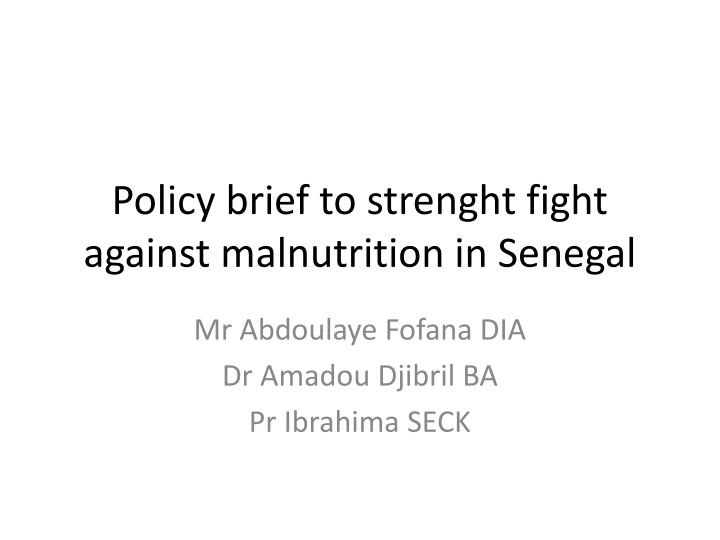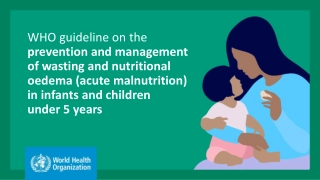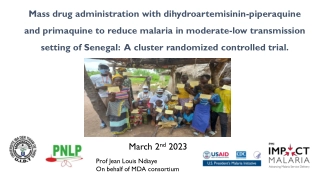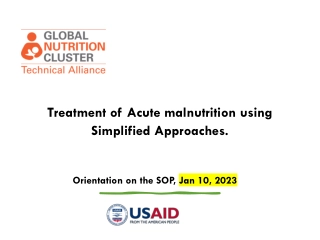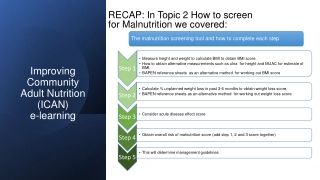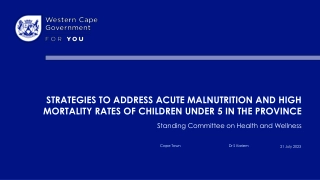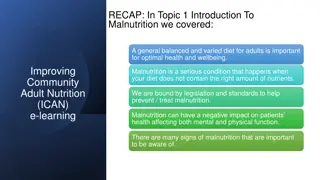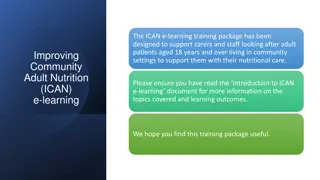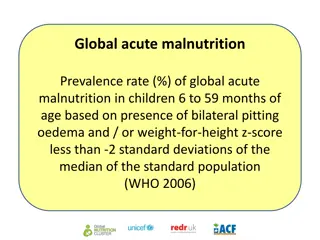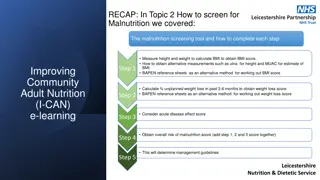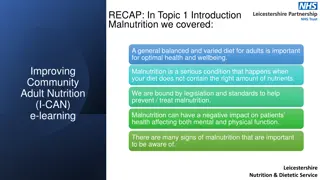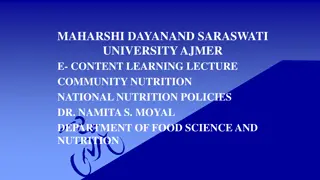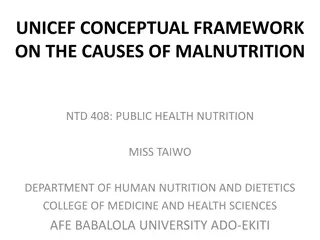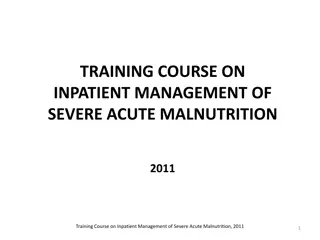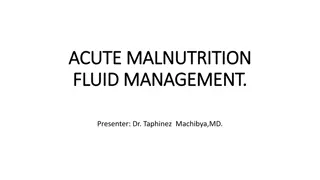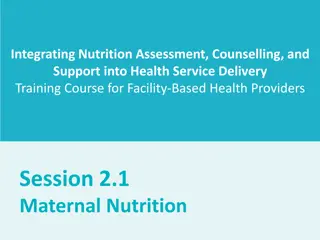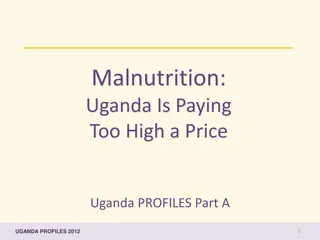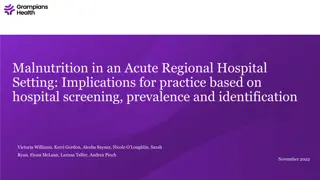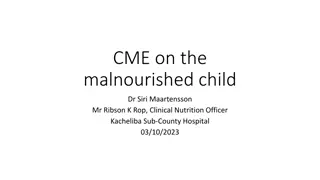Strengthening Fight Against Malnutrition in Senegal
Malnutrition poses a significant public health challenge in Senegal, with high prevalence rates among children under five. This policy brief addresses the critical factors contributing to malnutrition and highlights the need for improved implementation of key principles and sector involvement to combat this issue effectively.
Download Presentation

Please find below an Image/Link to download the presentation.
The content on the website is provided AS IS for your information and personal use only. It may not be sold, licensed, or shared on other websites without obtaining consent from the author.If you encounter any issues during the download, it is possible that the publisher has removed the file from their server.
You are allowed to download the files provided on this website for personal or commercial use, subject to the condition that they are used lawfully. All files are the property of their respective owners.
The content on the website is provided AS IS for your information and personal use only. It may not be sold, licensed, or shared on other websites without obtaining consent from the author.
E N D
Presentation Transcript
Policy brief to strenght fight against malnutrition in Senegal Mr Abdoulaye Fofana DIA Dr Amadou Djibril BA Pr Ibrahima SECK
Context and importance of the problem Malnutrition is a public health problem in Senegal. In 2014 according to DHS data, the nutritional situation is as follows: - Growth delay: 19% of children under five suffer from stunted growth which 5% of them suffer from severe growth retardation; - Acute malnutrition: 6% of children suffer from acute malnutrition; the prevalence was 10% in the North to the South and 6% to 3% at the West and Est. - Underweight: 13% of children are underweight which 2% severely underweight.
Context and importance of the problem The determinants of malnutrition in Senegal can be classified into the following broad categories: Problems related to health practices (birth spacing) and alimentation of women of reproductive age or pregnant women, and breastfeeding women Issues related to food practices related to poverty and food availability: lack of availability (quantity), lack of diversification (quality), Problems related to breastfeeding practices related to socio- cultural norms and the lack of relief work platform,
Context and importance of the problem Problems related to hygiene and care of children, pregnant women, their health status and the occurrence of a disease, Problems related to food processing and marketing; Problems related to non-compliance with texts on Food Standards (fortification or iron-enriched flour wheat or millet and salt iodization).
Statement on why the policy brief In 2014, the assessment of the policy letter of the 2001 nutrition had two objectives: Assess the level of implementation of the eight principles that govern this policy which are: (1 ) equity, (2 ) decentralization / devolution , (3) the partnership , (4) the contractualization, ( 5) sustainability (6) ownership, (7 ) transparency in the management and (8 ) Ethics . Evaluate the level of involvement of key areas that should intervene in the multisectorality: (1 ) Health, (2) Agriculture, (3) education , (4) Trade , (5 ) Industry (6) Private sector ( 7) Hydraulics / sanitation and (8) social Protection. The overall results showed that the level of implementation of these principles and the involvement of these eight sectors should be improved.
Policy recommendations The main recommendations each sector are: Health sector: to strengthen efforts and continue to extend for the sustainability of the achievements, to intensify the management of health determinants, improve reproductive health and family planning. Education sector: to (i) strengthen the institutionalization of nutrition, (ii) address more nutritional problems related to deficiencies in teenagers, (iii) to improve the level of education of women through literacy. Trade sector : to put more emphasis on quality assurance and quality control of food at all levels.
Policy recommendations Industry sector : to insist particularly on the placing on the market fortified products designed and salt iodization to fight against deficiencies. Water and sanitation: especially to emphasize the synergy and integration that must exist between the components of this sector. Agriculture, private sector and social protection: to strengthen their actions for nutrition.
Key stakeholders and outline strategies for negotiations Key stakeholders Health sector Education sector Trade sector Industries sector Water and sanitation Agriculture, private sector Social protection Civil Society Strategies Create a Coordination committee Describe roles and responsibilities Roadmap activities Monitoring and evaluation mechanism
Approaches to intersectorial arguments and use of economic evidence Increase of health expenditures Increase of food importation Social morbidity impact on productivity and production Malnutrition and Poverty
Discuss the use of evidence and general strategies used to communicate Face to face Media (TV, Radio, flyers, etc.) Focus group Advocacy Etc.
Strengths Political commitment Leadership (CLM) Multisectoriality Financial partners
Weaknesses lack of skilled human resources, adequate physical resources , including new technology in some sectors , lack of input products , lack of adequate and sustainable financial resources, lack of land to cultivate, lack of communication , education and awareness of the people. Problems of organization , administration and management
Final decision taken Increase of the state budget (Nutrition) Resource mobilization Intersectorial Ownership and better involvement Better coordination Improvement of the coordination committee.
THANK YOU DIEUREU DIEUF MERCI
